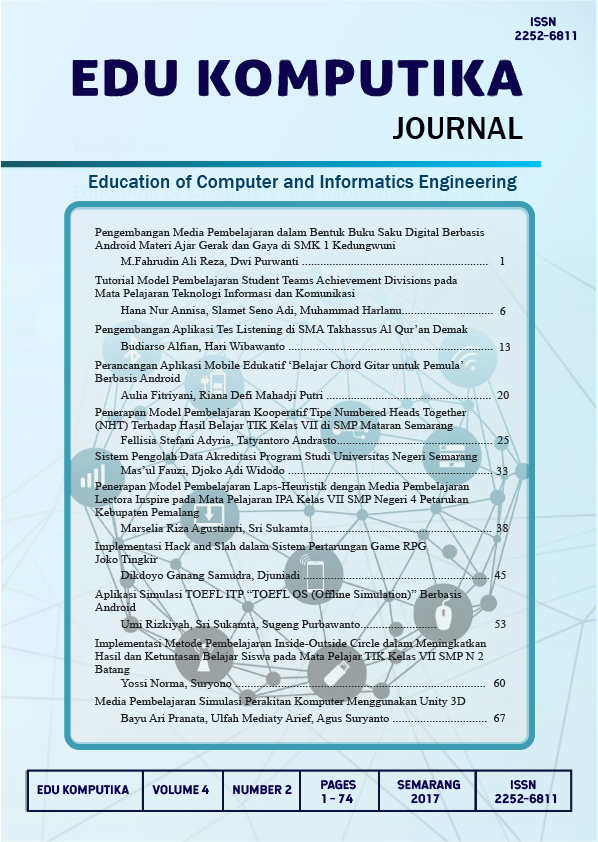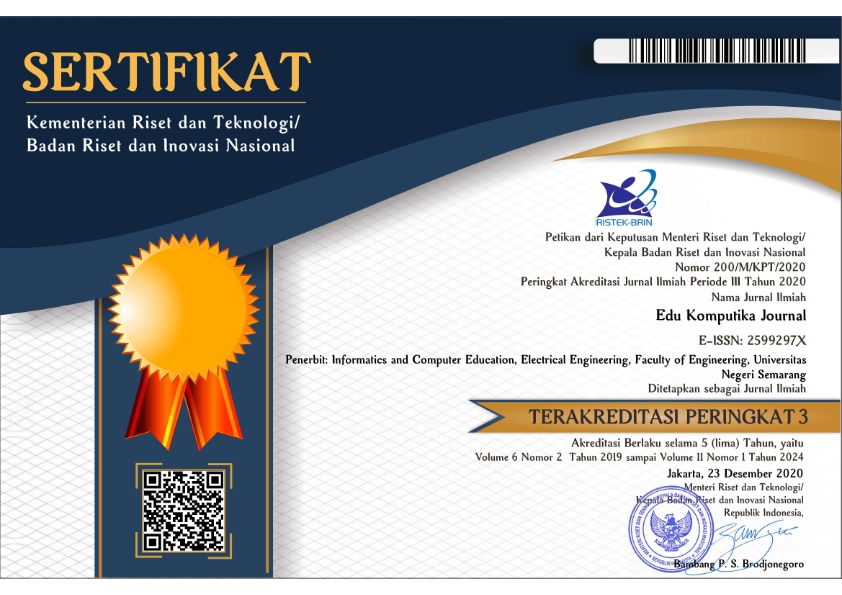Sistem Pengolah Data Akreditasi Program Studi Universitas Negeri Semarang
Abstract
According to the Higher Education Act Section Nine of Education and Learning Process Studies Paragraph 1 of Article 33, paragraph 3, which reads "Study Program was held with the permission of the Minister after meeting the minimum requirements of accreditation". Observations from the State University of Semarang, the data collection process and accreditation forms filling is done manually by using Microsoft Office software. Data dibutuhan not only the data that existed at the current time but the existing data for a few years back. The problems disclosed in this research is how to design and create a Data Processing Information Systems Web-Based Program Accreditation. The purpose of this study was to perform the design and manufacture of Data Processing Information Systems Web-Based Program Accreditation. The method used in the development of research systems are methods Sequential Linear or Waterfall. This stage starts from the process of analysis, design, coding, and testing. The analysis used object-oriented analysis approach or Object Oriented Analisys (OOA). Stage design software used object oriented design approach or Object Oriented Design (OOD), the next stage of encoding tool used is a PHP Framework Panada that applies the concept of Object Oriented Programming (OOP). After Testing, through this system data to be used for the accreditation process will be collected centrally and can be accessed from anywhere in the home using an Internet connection. Besides the work can be done in groups. Data that has been separately input will be automatically collected into one. After all the data is collected it will be exported into a file that is ready to be used as material for accreditation. It can be concluded that the system is running well.
















